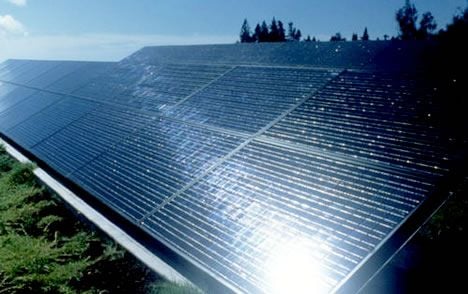
Aug 3, 2015
Blog Energy & Sustainability New Method of Harnessing Solar Power Could Lead to Inexpensive, Efficient Metal-Based Solar Cells
New research from Rice’s Laboratory for Nanophotonics (LANP) could boost the efficiency of photovoltaic solar cells while lowering their manufacturing costs.
Photovoltaics (PV) cells are a clean form of energy that can be manufactured and installed in a variety of configurations. Most efficient photovoltaic cells use a combination of semiconductors that are made from rare and expensive elements like gallium and indium.
One way to lower manufacturing costs would be to incorporate high-efficiency light-gathering plasmonic nanostructures with low-cost semiconductors like metal oxides. LANP researchers have done just that. Bob Zheng and Alejandro Manjavacas developed a method that could allow solar engineers to determine the electricity-producing potential for any arrangement of metallic nanoparticles.
PLASMONIC STUDY SUGGESTS HOW TO MAXIMIZE PRODUCTION OF "HOT ELECTRONS"
In their report, Zheng and Manjavacas discussed how they created two types of plasmonic devices. Each consisted of a plasmonic gold nanowire atop a semiconducting layer of titanium dioxide. In the first setup, the gold sat directly on the semiconductor, and in the second, a thin layer of pure titanium was placed between the gold and the titanium dioxide.
The first setup created a microelectronic structure called a Schottky barrier and allowed only hot electrons to pass from the gold to the semiconductor. The second setup allowed all electrons to pass.
“The experiment clearly showed that some electrons are hotter than others, and it allowed us to correlate those with certain properties of the system,” Manjavacas said. “In particular, we found that hot electrons were not correlated with total absorption. They were driven by a different, plasmonic mechanism known as field-intensity enhancement.”
The pair’s research provides a route to increasing the efficiency of plasmonic hot-carrier devices, which could lead to more efficient devices for converting sunlight into usable energy.
Annual global consumption of energy in 2007 was estimated at 16 trillion Watts (TW). By 2035, the demand for energy is estimated to reach 35 TW. Demand will be particularly high in nations such as China and India that are rapidly achieving industrialization.
Related BCC Research Report:
Global Markets and Technologies for Photovoltaic Systems (EGY014J)

Electrical switches—devices that control the flow of electricity—are the backbon...

As the world accelerates toward net-zero emissions, hydrogen, and ammonia have e...

Hydrogen technology is widely used across industries like glass, fertilizer, met...

We are your trusted research partner, providing actionable insights and custom consulting across life sciences, advanced materials, and technology. Allow BCC Research to nurture your smartest business decisions today, tomorrow, and beyond.
Contact UsBCC Research provides objective, unbiased measurement and assessment of market opportunities with detailed market research reports. Our experienced industry analysts assess growth opportunities, market sizing, technologies, applications, supply chains and companies with the singular goal of helping you make informed business decisions, free of noise and hype.